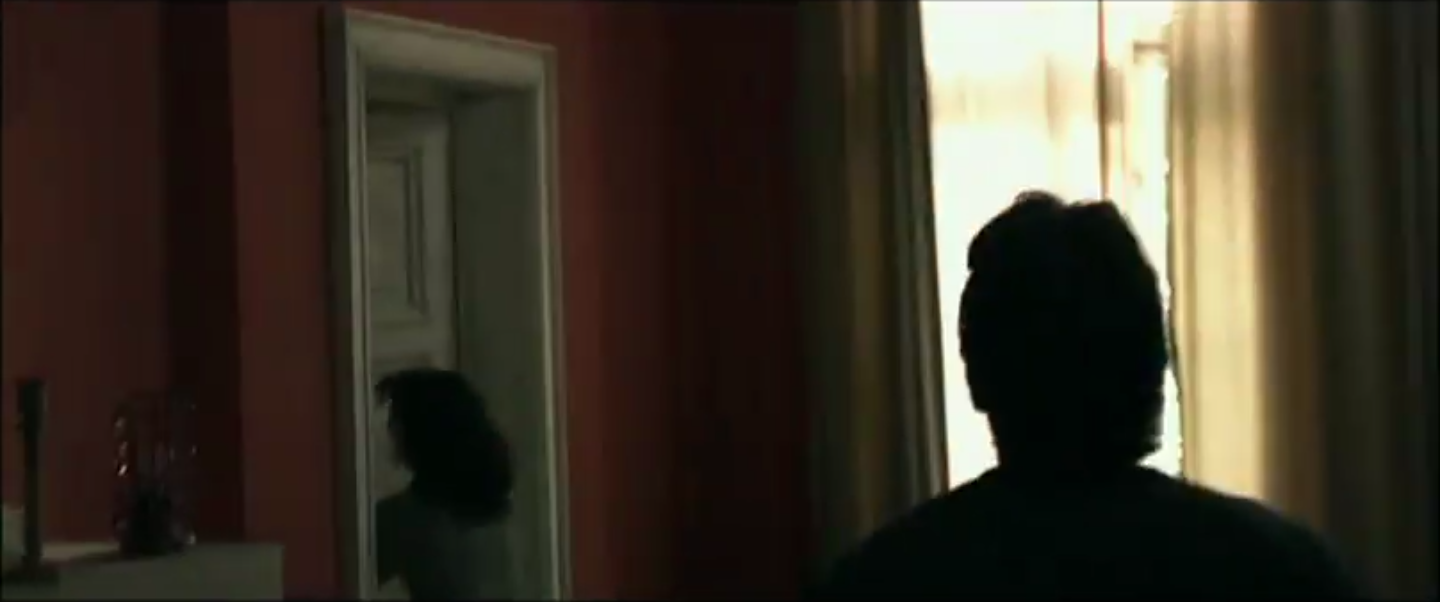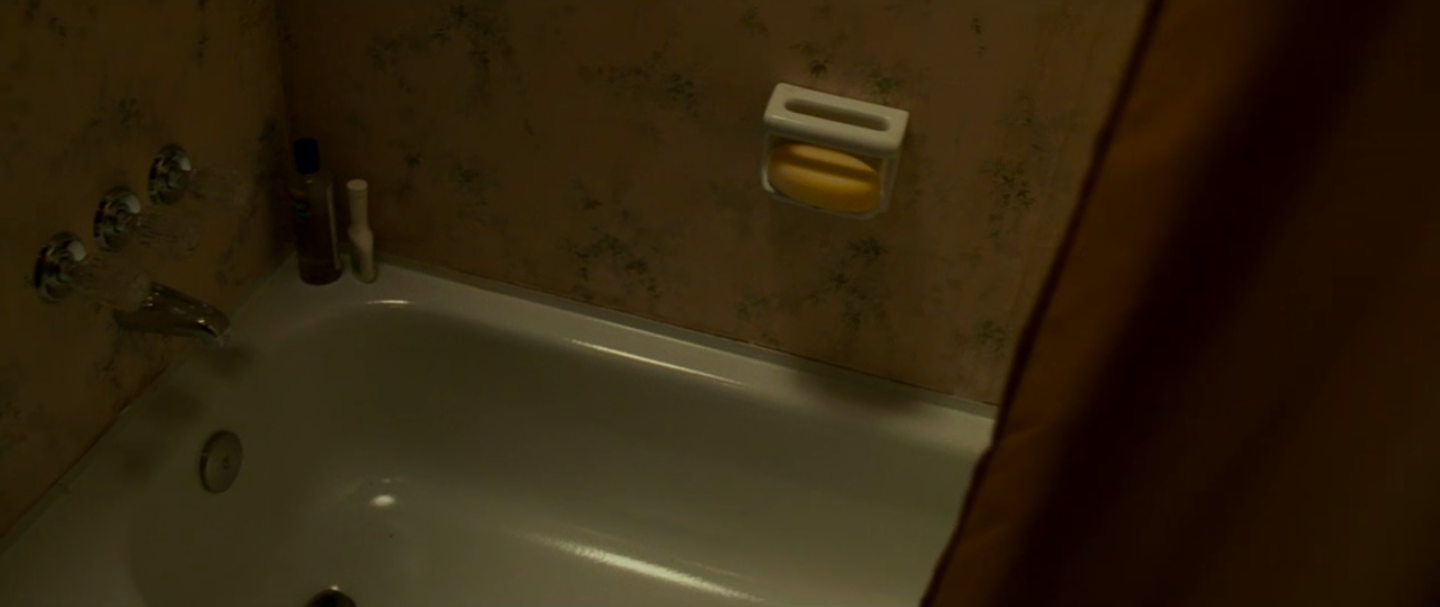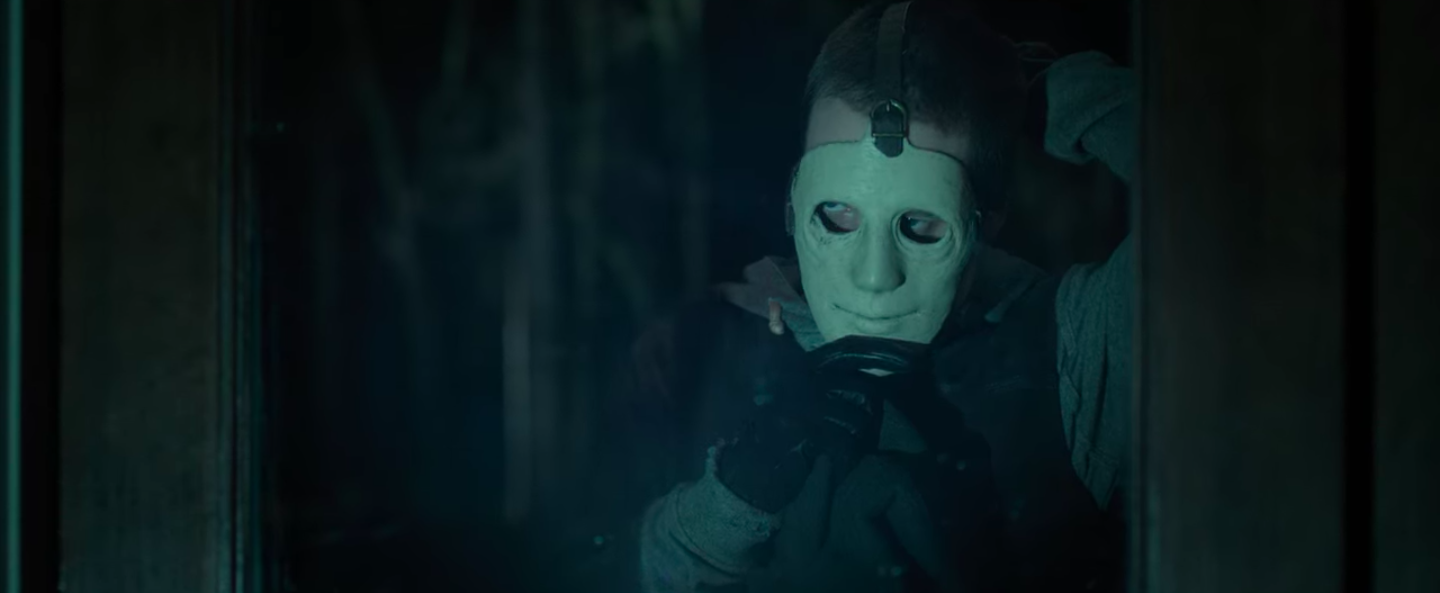Home Invasions | Them, Night Stalker, The Strangers, & Hush
Intimate spaces, creeping fears.
Media discussed: Them (2006), Night Stalker: The Hunt for a Serial Killer (2021), The Strangers (2008), & Hush (2016). Some spoilers.
Content warning: true crime murders, serial murder.

There’s an early scene in David Moreau’s and Xavier Palud’s French-Romanian home invasion horror film Them (“Ils” in French) where our protagonists Clementine and Lucas playfully run through their house. We don’t witness what provoked the chase, but we see Clementine running up the stairs, Lucas appearing from an adjoining hallway, and then follow—shaky, handheld camera pursuing—as, laughing, screaming with glee, she runs ahead of him and shuts herself in the bedroom bathroom, leaving him panting on the other side. It’s not a particularly remarkable moment in these early minutes—just a little glimpse into their domestic life. As things progress, though, as the home invasion begins and intensifies, the scene will be echoed again and again. It’s a film full of shaky shots capturing our protagonists running, surprised in hallways, escaping pursuers, and slamming doors. In these subsequent scenes, in these echoes, of course, they’re running for their lives.
The home invasion subgenre can feel a little dry. It can come across as a genre exercise: a slasher movie set piece extended to ninety minutes. There’s a kind of elemental simplicity to films so rooted in the present tense—so focused on the shadow at the window or in the hall. We’re just trying to survive this. It isn't clear, at first, what these films might be about, or what they might be asking of us as viewers, aside from maybe appreciating the mechanics of sustaining tension over long periods of time.
There’s a dark allure to home invasion horror, though it’s a bit difficult to put a finger on it. It rhymes with, and relates to, the allure of certain types of true crime. I recently watched Night Stalker: The Hunt for a Serial Killer on Netflix, a four-part docuseries on the serial killer that terrorized Los Angeles in the 1980s, breaking into people’s homes as they slept. I was way too young to really understand what was happening at the time (and my family was also not really in the killer’s range, living two hours south of LA), but the crimes loomed over my childhood. As we got older, following the lead of the adults around us, we were scared of this guy—even though he was in prison. It was different from the other things that creeped us kids out. It was, really, the scariest thing. There was something uniquely scary about this kind of crime, about someone entering your home, at night, intent on killing you. But it’s also the kind of thing we wanted to know everything about. We wanted to read what we could find about it, and we wanted to draw more details from our parents and the older kids. And we later wished, of course, wide awake in bed, that we hadn’t read a single word on the subject.
The allure of home invasion horror revolves around the same kind of fearful fascination, but in an aestheticized, structured way. It’s perhaps characterized by two distinct aspects. The first is that the crimes in these films feel real—feel like true crime. These are things that could happen to you. Home invasion murders litter our cultural imagination: from the Night Stalker, to the Manson family, to the Clutter Murders in In Cold Blood. We all know these crimes. When we see home invasions on film, we can’t mentally categorize them neatly, or safely, as unreal. These things do happen.
Although, not really, right? These things have happened. They could happen, but—like most of our true crime obsessions—they feel more relevant than than they really are. They’re rarities. When it comes to our lived experience, and our historical moment, other subgenres do a better job of sounding necessary alarm bells. Godzilla and his kaiju followers arise in the shadow of Hiroshima and Nagasaki, inflicting city-wide damage metaphorically tied to the nuclear bomb, and, more broadly, to the population-level catastrophes cities really face. The “unrealistic” spectacle of Godzilla stomping through Tokyo—a vision of mass disaster—should really scare us. Climate change is happening. Our states have begun to burn or flood annually. Disasters, whether natural, man-made, or both, are inevitable. And we’re quite bad, collectively, at protecting ourselves from them or preparing for the worst. Home invasion films feel real but, despite what our Investigation Discovery-addled minds might tell us, they’re hardly relevant in a literal, “this could happen to you” kind of way. Godzilla really is coming. The Manson family almost certainly is not.
Beyond its aura of realness, the aesthetic of home invasion horror relies on a particularly potent use of the home. Of course it recasts safe, domestic spaces as hunting grounds, but its power isn’t simply in this inversion. Its power is in this inversion's familiarity. That noise in the dark—we’ve thought about it countless times before.
The home is the the space we most project these kinds of fears into—though, usually, only for a moment or two. We imagine someone in the other room, or down the stairs, or outside the window. We do it all the time. My freezer’s ice maker has an unbelievable repertoire of noises. Late at night, in bed, I hear clatters, rattles, and shuffles that sound like they must be caused by human movement. I know it’s the damn ice maker, but the thought crosses my mind: is there someone out there in the dark? Sometimes I lift my head up in bed and peer out the bedroom door. (It's even worse when I visit my parents’ house. They live on a windy mountain and trees brush up against every window in the house. If Tex Watson and company were breaking in, they’d make significantly less creepy noise than those wind-blown trees scraping the windows.) We all recognize this headspace. There’s no place like home to have that feeling: is someone out there in the dark?
Home invasion horror grabs ahold of this familiar feeling and stretches those usual seconds or minutes over a feature-length runtime. In Bryan Bertino’s The Strangers (2008), the really scary stuff starts happening after Kristen’s boyfriend James leaves the house to get a pack of smokes. Among other disturbing occurrences, Kristen pulls back a window curtain to find a masked man staring at her from the outside. When James returns, he finds a terrified Kristen, and they search the house for intruders. In their search, James pulls back the shower curtain in case it's hiding anyone. There’s no one there. But it’s a familiar move isn’t it? Behind the shower curtain is maybe the most classic place in the home for us to project our fears. James is doing something we all do. He’s living in that familiar, late-night headspace. But, for him, his fears are real, not projected, and the headspace won’t be short-lived. In fact, he’ll never snap out of it.

Problems arise for a filmmaker, though, when extending that headspace for the duration of a feature film. For one, the simple home invasion scenario, in its contained setting, would likely run its course quite quickly. In the true crime reference points, the time elapsed between an intruders’ arrival at the home and the intruders’ attack on the home’s occupants is never very long. Houses are not mazes. Victims are caught unawares.
For another, commercial cinema requires escalating events, turning points, surprises, and climaxes. This isn’t so simple given the setting and subject matter. The true crime models certainly don’t lend themselves to these requirements. A real home invasion would involve maybe a moment or two of apprehensive confusion and fear followed by an attack. It’s really the stuff of a typical scene in a horror film—not material for a whole feature.
One solution we see is to make the home invasion a game. It’s not a conceit unique to home invasion horror. But it is especially vital to the subgenre. It structures the narrative. Home invasion villains don’t want to simply get into your house and kill you. They want to confuse you, terrorize you, bring you on a whole journey. Then, finally, they want to kill you. They’re excellent filmmakers.
In Mike Flanagan’s Hush—an especially stripped-down home invasion film depicting deaf writer Maddie’s solo face-off, in a small house, with a crossbow-wielding sadist—something striking happens early on. The killer takes off his blank, white mask. It’s an unusual move. Masks generally stay on in horror, at least until the third act. Here, though, blank, anonymous, slasher mystique gives way to a creepy dude with a neck tattoo. There’s a lot we could say about masks and how maskless-ness works in the film (it’s directly motivated by Maddie’s message to the killer that he can safely leave her alone because she hasn’t seen his face). But the notable thing, for our purposes, is that mask removal makes communication easier—ensures that hunter and prey understand each other. Maddie can read lips, so the killer can speak to her through the house's glass door. Our anonymous, slasher-style antagonist is replaced by a specific man with a specific agenda. Now that he can communicate, he explicitly explains the game he’s playing. He tells her he can come inside any time he wants, but he’s going to wait. He’ll come in, he tells her, when she wishes she were dead. Then he asks if she understands him. When she nods, he responds, “Good. Then we can have some fun. Enjoy it.” It’s a game, he’s telling her, and these are the rules. It's better if she understands them.

The game structure is neatly motivated in Them in the late reveal that the people terrorizing Clementine and Lucas are all kids and teenagers. The source of the creepy rattling sound we’d been hearing in the dark turns out to be a ratchet-style noisemaker carried by one of the kids. And a closing title card, describing arrests of the perpetrators in the supposedly true aftermath of the crime, reads: “During the first interrogation, the youngest amongst them declared: THEY wouldn’t play with us . . . .” If we’re going to mess with our protagonists, then slowly increase the terror, why not make our antagonists kids? We might expect adult killers to get to the point. Kids, on the other hand, play games.
We get explicit acknowledgments of game-playing in Hush and Them, but it’s often simply apparent in how these films unfold. What would Them be without the lights turning off and on and off again? Or The Strangers without all the knocking at the door? Or Hush without a killer intent on taking his sweet time? Game structure let’s these movies breath, change shape, and—yes—take their time.
If we imagine Lucas and Clementine running for their lives in Them as echoes of that early, carefree scene—echoes of the running, the handheld camera, the scream, the slammed door—we can experience a kind of double vision, a blending of the terrifying and the familiar in our most intimate spaces that maybe conjures the central home invasion film experience. These are films that feel true to life but rely more directly on our imaginative relationship with the home. They take the dark fears and sensations that generally creep in only fleetingly from the margins of consciousness, and—often excruciatingly so, with the animating logic of a game—make them real, solid, extended, pushing those marginal thoughts out into the open, giving them space and time. When your breath catches at the shadow in the hall, the home invasion film asks you, maybe, to hold it a little longer. There are honestly more important things to worry about—but, even so, we can’t help observing that, for some of us, once in a long while, that shadow cannot be simply wished away.
Horror writing elsewhere:
Wasn't my plan to link to Crooked Marquee in both of my first two newsletters, but nothing's got me excited to see a movie recently like this Zach Vasquez piece about 1979's psych-horror cult favorite (at least in Spain) Arrebato—reemerging from semi-obscurity with a new 4K transfer. Its Madrid setting, addiction narrative, and Almodóvar connection make it sound like an interesting pairing with Pain and Glory.
Dead of Night has no publication schedule. Sign up to receive new essays about horror cinema in your email inbox.